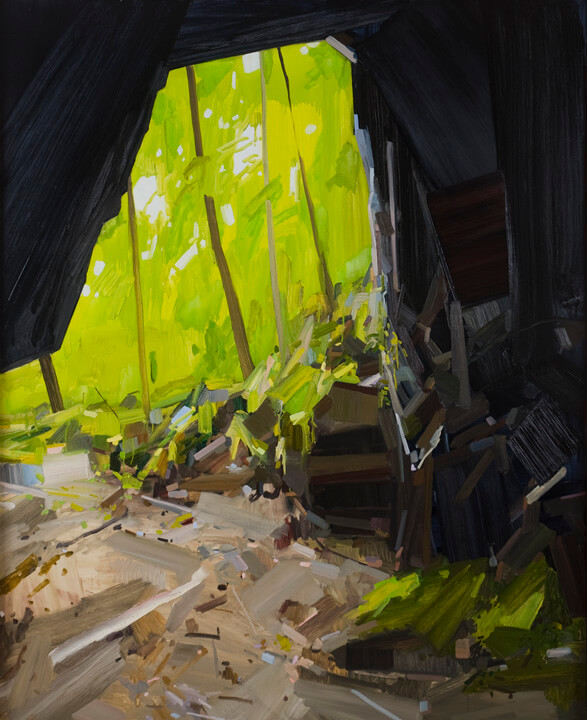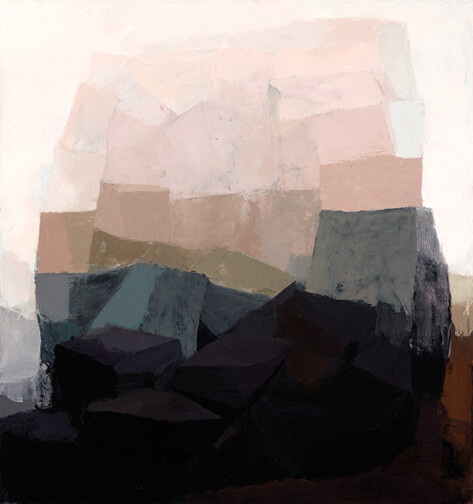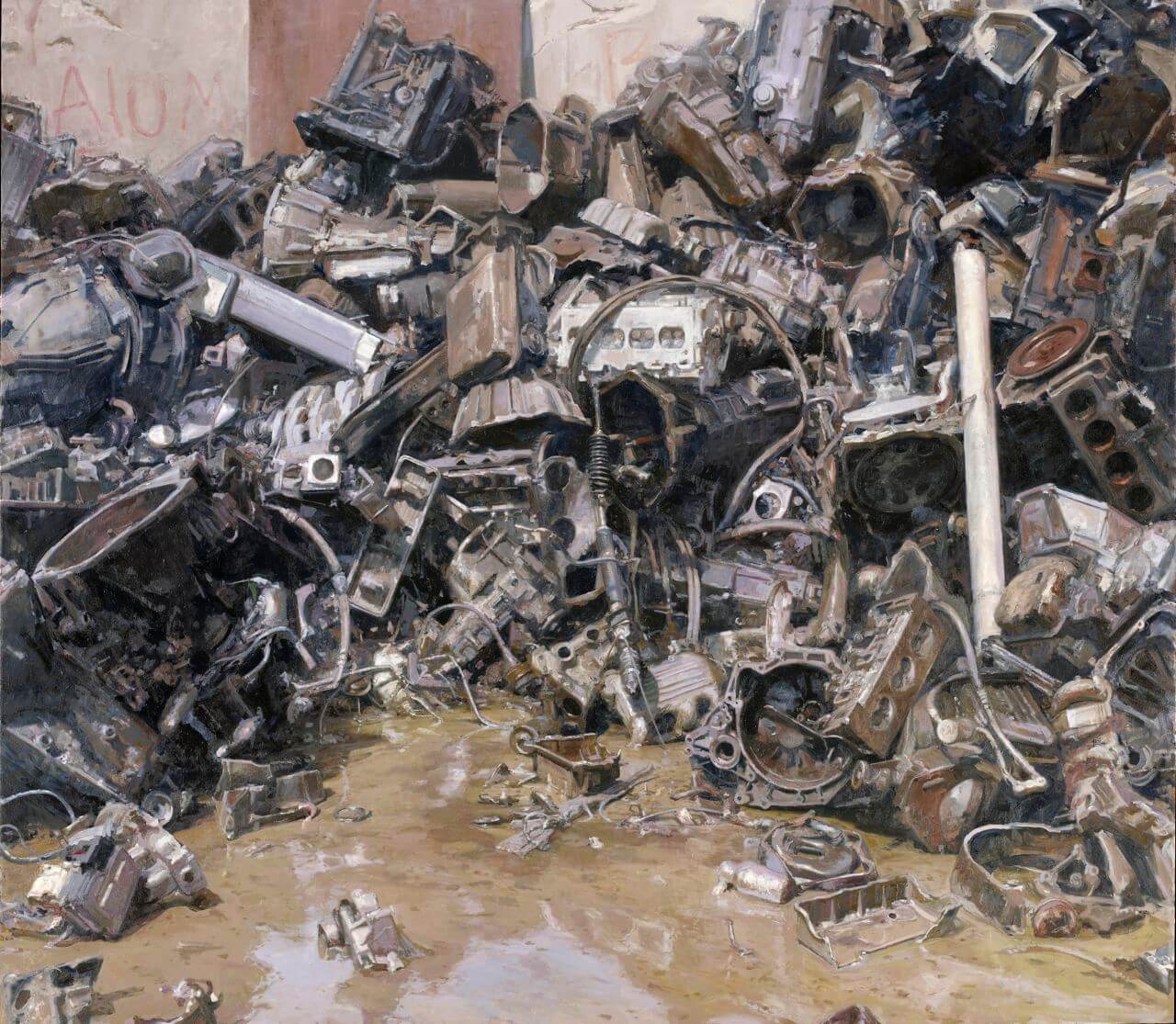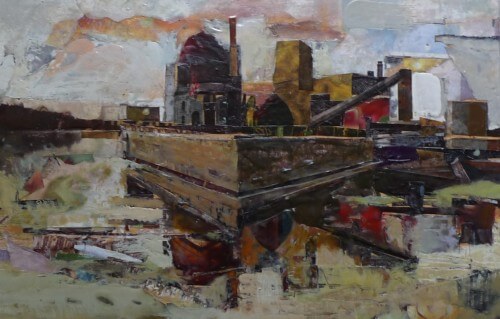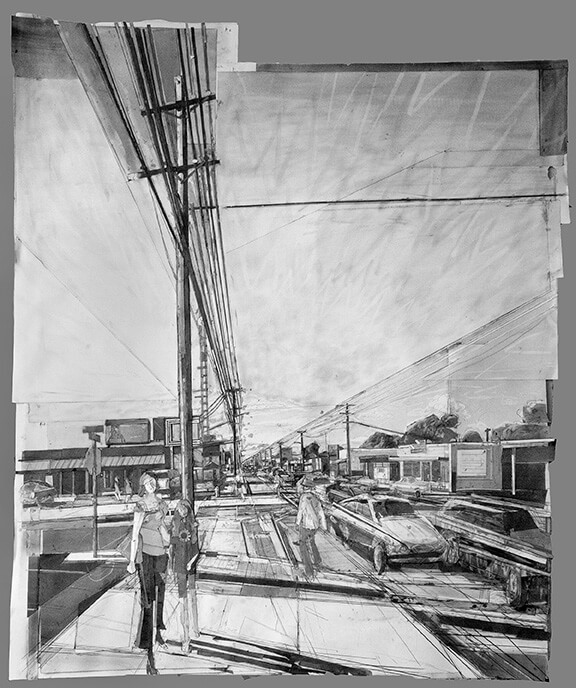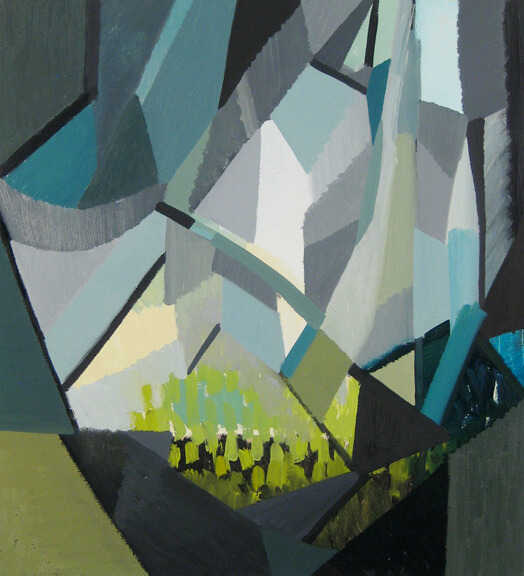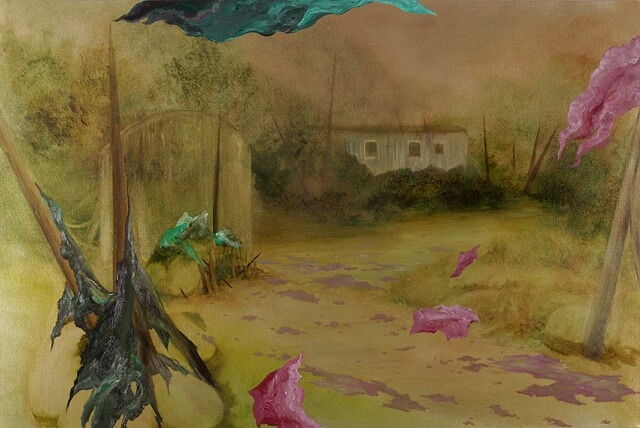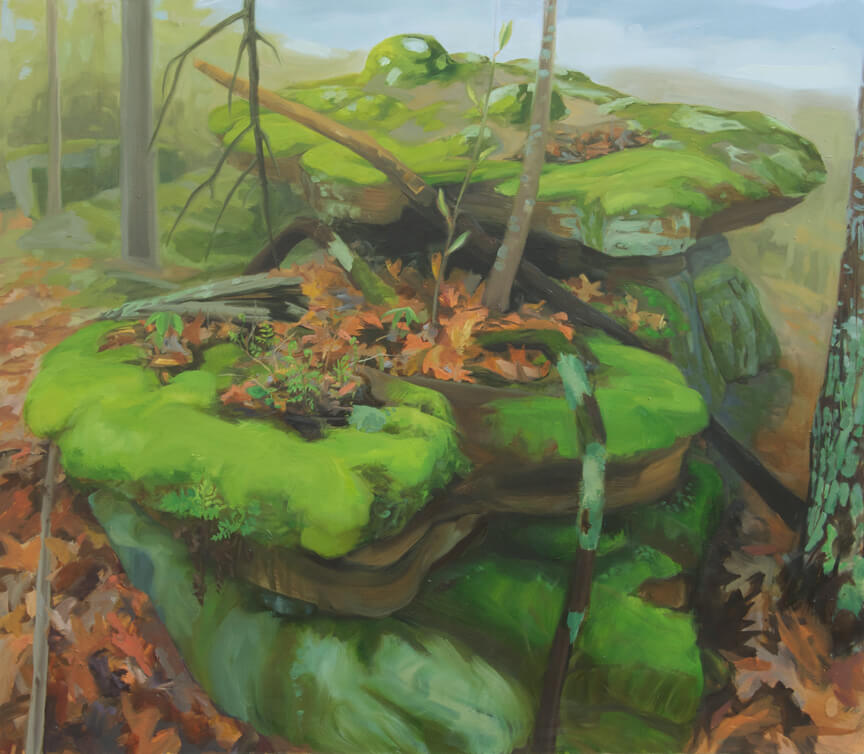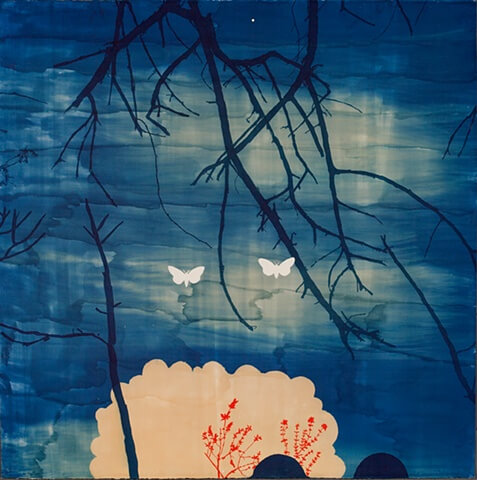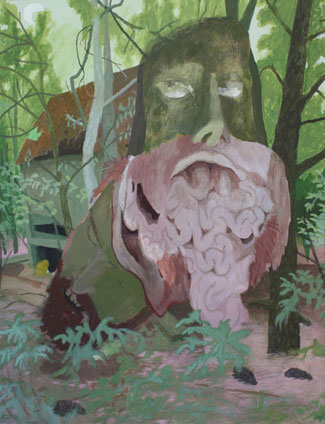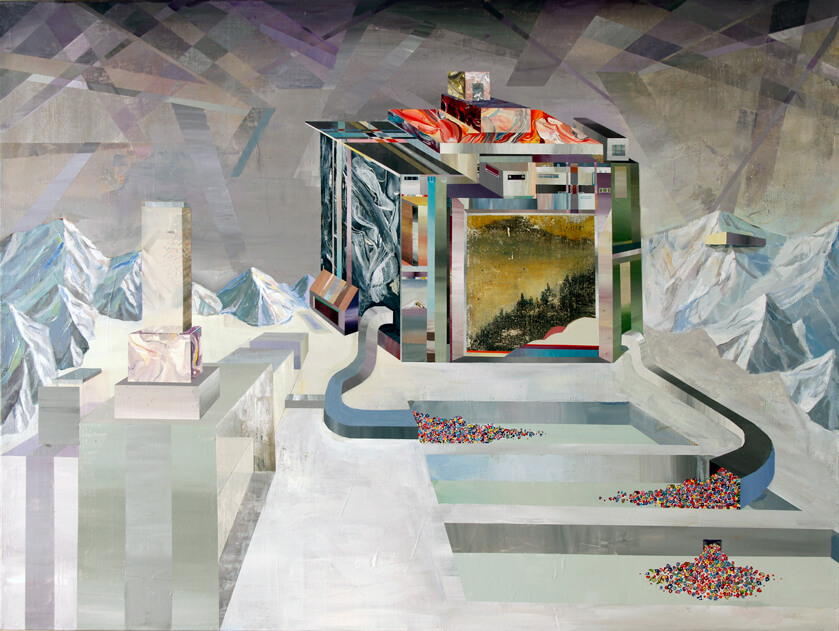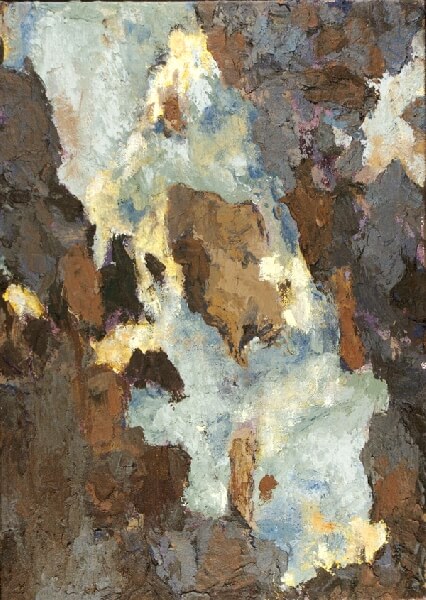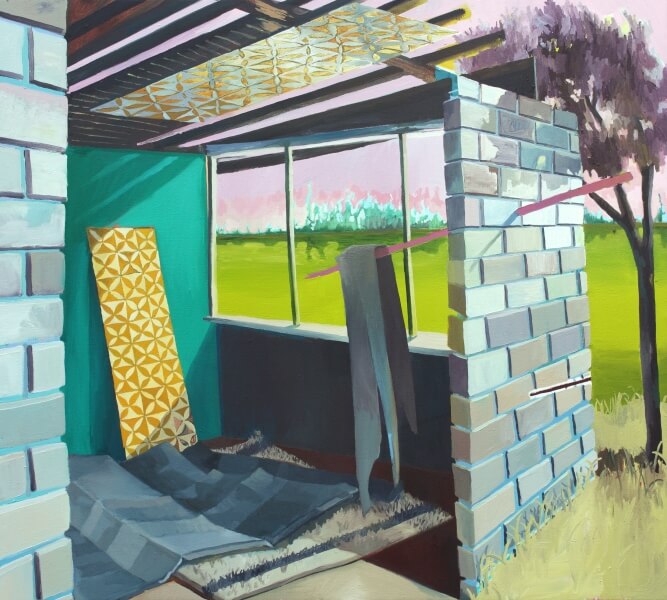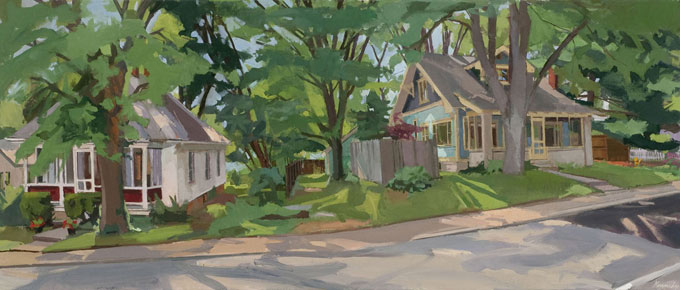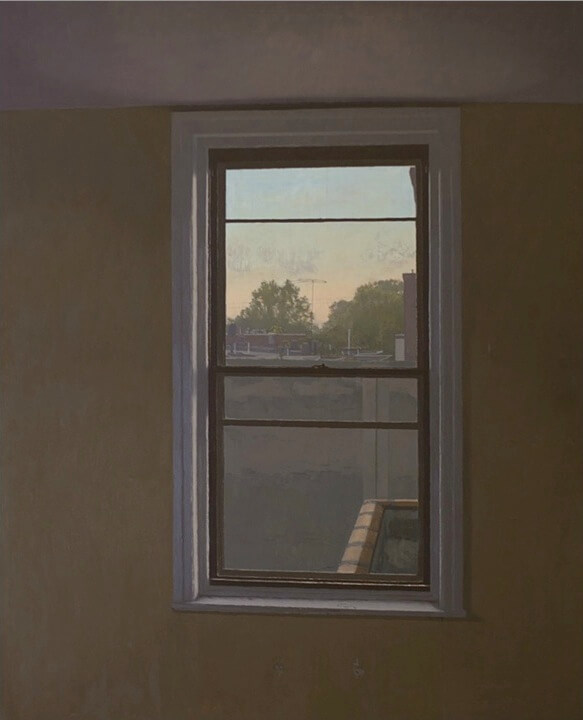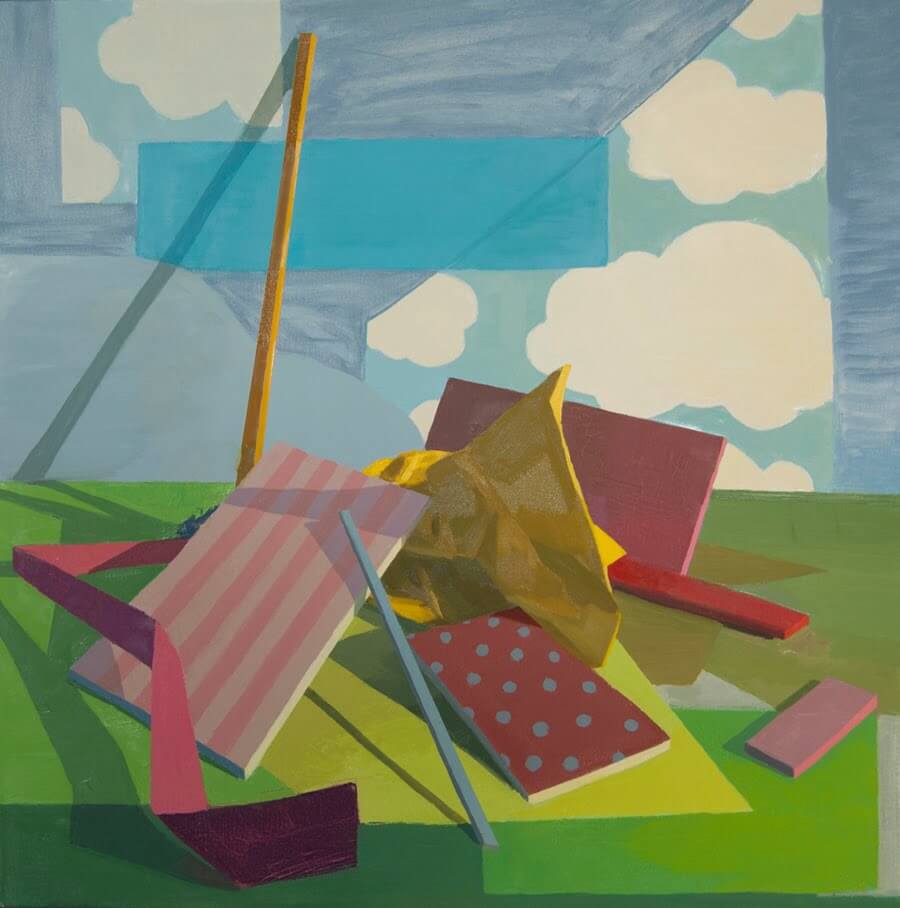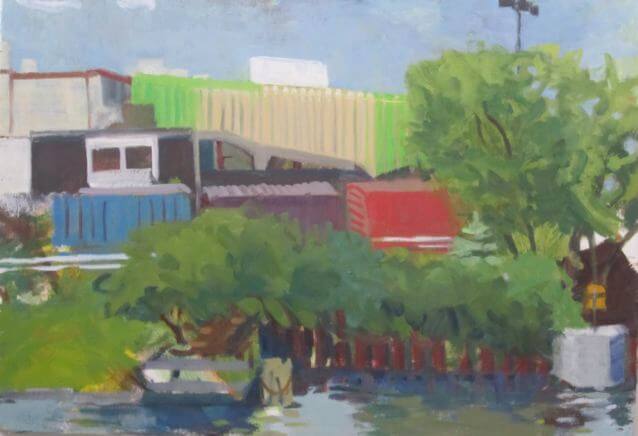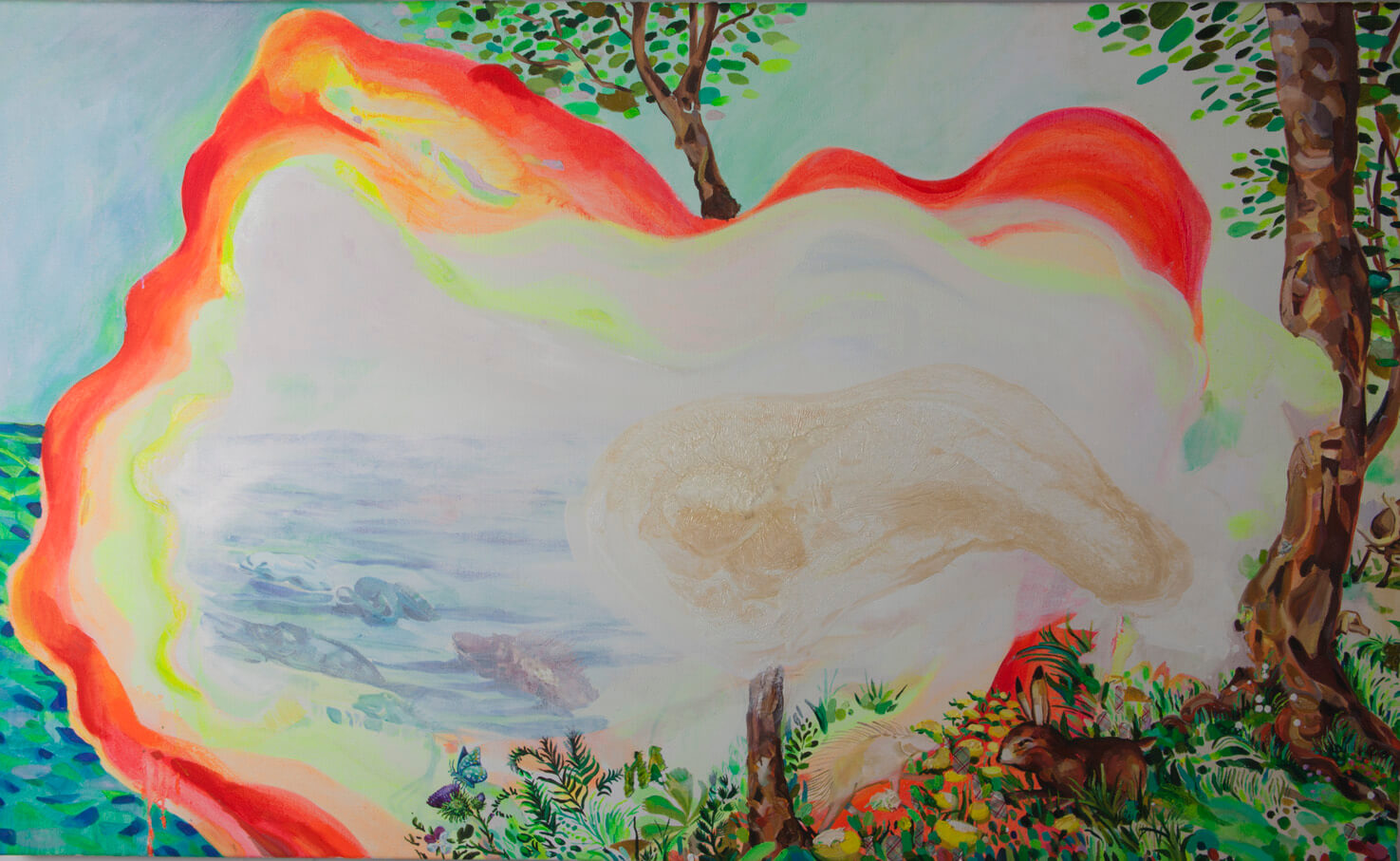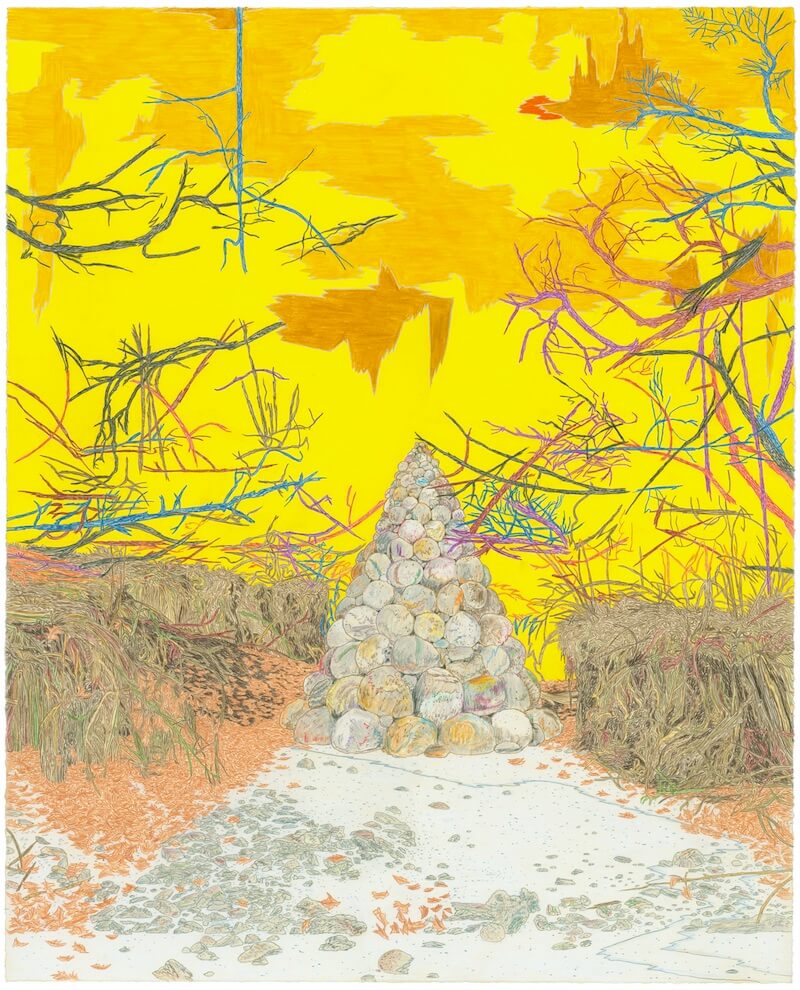The landscape has inspired painters from Courbet, Monet, and Cézanne to Jackson Pollock and Joan Mitchell, the immensity of nature acting as a catalyst for each of their highly individual visions.
Tenses of Landscape, on view at the University of Arkansas Fine Arts Center Gallery through November 4, 2012, takes a look at the influence of landscape in the work of nineteen contemporary painters: Ricky Allman, Julie Cifuentes, Mike East, Emily Gherard, Grant Hottle, Michael Kareken, Tim Kennedy, Carla Knopp, Michael Krueger, Mark Lewis, Kristin Musgnug, Joseph Noderer, Margaret Noel, Casey Roberts, Claire Sherman, Kimberly Trowbridge, Shane Walsh, Megan Williamson, and Jenn Wilson.
In the exhibition introduction, Sam King writes that the show “presents both broad and dynamic depictions of landscape revealed as motif. Moreover, each artist examines the terrain dictated by these approaches and in turn addresses the act of painting itself.”
In addition to publishing statements by the artists each Monday on their blog MW Capacity, exhibition co-curators Sam King and Christopher Lowrance agreed to share their thoughts on putting together the show with Painters’ Table.
Painters’ Table (PT): Tenses of Landscape grew out of the energy and online conversation generated on your blog MW Capacity. Now that you have brought this work together in an exhibition, what surprised you most about how the paintings hang together in the “real” world. In person I would imagine that there would be connections based on the physicality of the works, mark-making for instance, that are less apparent in reproductions or on the web?
Sam King (SK): I have been pleased beyond expectation by the work in person. There were several paintings where I couldn’t tell from a jpeg what the surface and the mark would be like. Michael Kareken’s painting turned out to be very painterly at close range, which is great. Mike East’s painting pays out at close range in an opposite but equally satisfying way–it’s a view through a window, where most of the painting is the wall surrounding the window. The small space that’s actually what you’d consider the ‘view’ is so subtle and particular. Also, there’s just no substitute for the physicality of a painting like Claire Sherman’s, or Mark Lewis’s collaged drawing.
There are some funny and interesting things that come from arranging a show like this. Kristin Musgnug’s painting of relatively unspoiled nature hangs beside Joe Noderer’s painting of a kind of weird rustic nightmare, for example. There are also some nice compositional harmonies between paintings that will become apparent as the rest of the exhibition inventory is posted. As a teacher, I have to say this is kind of a dream scenario. It allows me to point to all these different kinds of connections that can be made.
PT: The show makes a strong argument for the vitality and diversity of the landscape genre in contemporary painting. Do you feel that landscape is especially well suited to expressing the contemporary condition? In other words, why landscape? why now?
SK: Honestly, the impetus was that there was a landscape painting class on the schedule for the fall semester, so I knew the exhibition would have a direct benefit to the students at UA. That the show aims at being diverse and vital is pretty much unavoidable. We barely scraped the surface of what’s out there. The advantage Chris and I have is the blog – it was a way for us to narrow the options to a reasonable range. Many of the artists had already been on MW Capacity.
I hesitate to say that the landscape is more well-suited to expressing the contemporary condition than other genres. We’re all pretty well-versed in all these well-trodden modes. It’s more about what you do with them. That’s true regardless of the motif or genre.
PT: No matter the level of abstraction, in landscape painting there is always a sense of escapism, of nature and the outdoors, and of experiences that happen away from technology. How does the idea of “Nature” manifest itself in the exhibition?
SK: “Nature” is definitely up for debate. You can speak about it generally, but it’s hard to confirm the boundaries. It’s always a negotiation, a mental construction. There are all these great, inherently self-aware expressions in the show. I mean “self-aware” in that the motif becomes a stand-in for painting (and therefore, the painter), like a view out a window or a mouth of a cave. You don’t have to believe me, but I didn’t completely fathom this until all the paintings were up at the same time and I saw them together.
Christopher Lowrance (CL): I’ll jump in here because I think Sam is touching on something that occurs to me as the answer to the previous question, “Why landscape? Why now?” Looking at the responses the artists provided, there seems to be a unique sense of self in relation to subject that artists experience working with the landscape. I’m purely speculating here, but it might even be that unique subject-object relationship that attracts artists to the motif.
As the artists write about their work, some of what they say on this topic applies generally to painting or other art practice. They are writing about memory and about phenomenology. They also bring up invention and how that works differently when one works with access to the subject than when one works without. Margaret Noel writes about using materials that are a little more difficult to control, and while she’s talking about her personal process, there’s a hint of a metaphor in it.
That’s a “generally,” but specifically there’s a sense that with landscape or nature one approaches and all these concerns in a unique way. Nature overwhelms, and we’re aware that it exercises a control over what we do. We feel connected to it, responsible for it, guilty about the way we treat it. And I don’t think these things enter into paintings of, say, the figure, or text, or even abstract work in the same way.
PT: Tenses of Landscape includes a wide variety of work from 19 artists. Although each could be said to paint landscapes, there is also a tremendous sense of individuality. Was this a specific curatorial goal or did the range of work surprise you once you started looking?
SK: This was a goal from the outset. Chris and I have always seen MW Capacity as a way to amplify the diversity and clarity of expression of (mostly) midwest artists. We didn’t have to debate it at all. I feel like if all these people were at a party together, it would be a really lively and interesting party.
CL: It’s got to be said, before we end, that Sam did the lion’s share of work on this exhibit. Credit where credit is due. From the start, it was obvious he felt an intense need to put this show together. So it’s great to see the crops harvested and brought to table (to make sure we throw in a corny Midwestern landscape joke somewhere in this interview). Just like Sam mentions, the discussions about choosing work were almost always about connections, looking for similarities or dissimilarities in format, or color or something that would hopefully make a link between works that would otherwise seem unrelated in terms of style, or just emotional tone. That’s been typical of the way we’ve worked together generally, with the blog or other curatorial projects.
SK: I’ll allow that, as long as everyone knows that Chris did the lion’s share of finding these artists for the original MWC posts.
SK & CL: Thanks to Painter’s Table for a chance to talk about this show!
PT: Sam and Chris, thanks for sharing your thoughts. Congratulations to you and to the artists in the exhibition.
